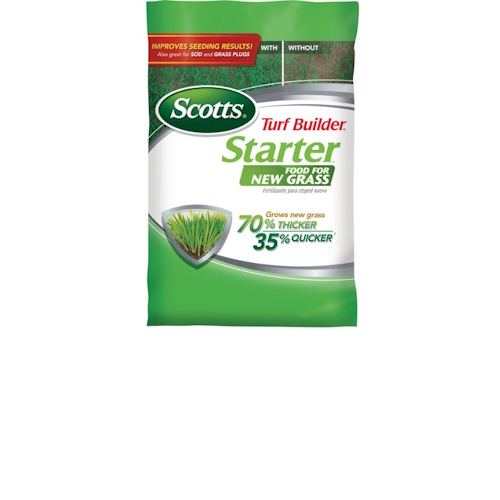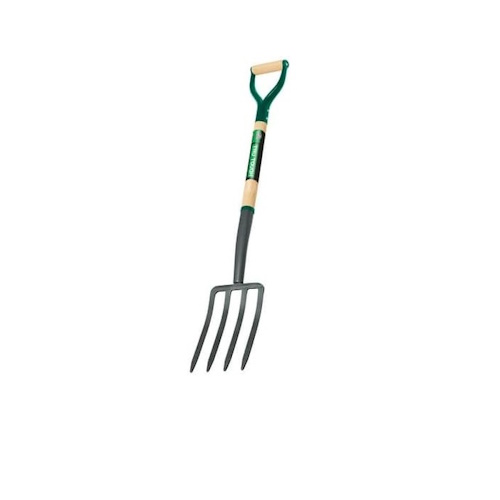How to overseed a lawn – a step-by-step guide to repairing damaged grass
Discover how to get your grass summer-ready with our expert advice on overseeding a lawn
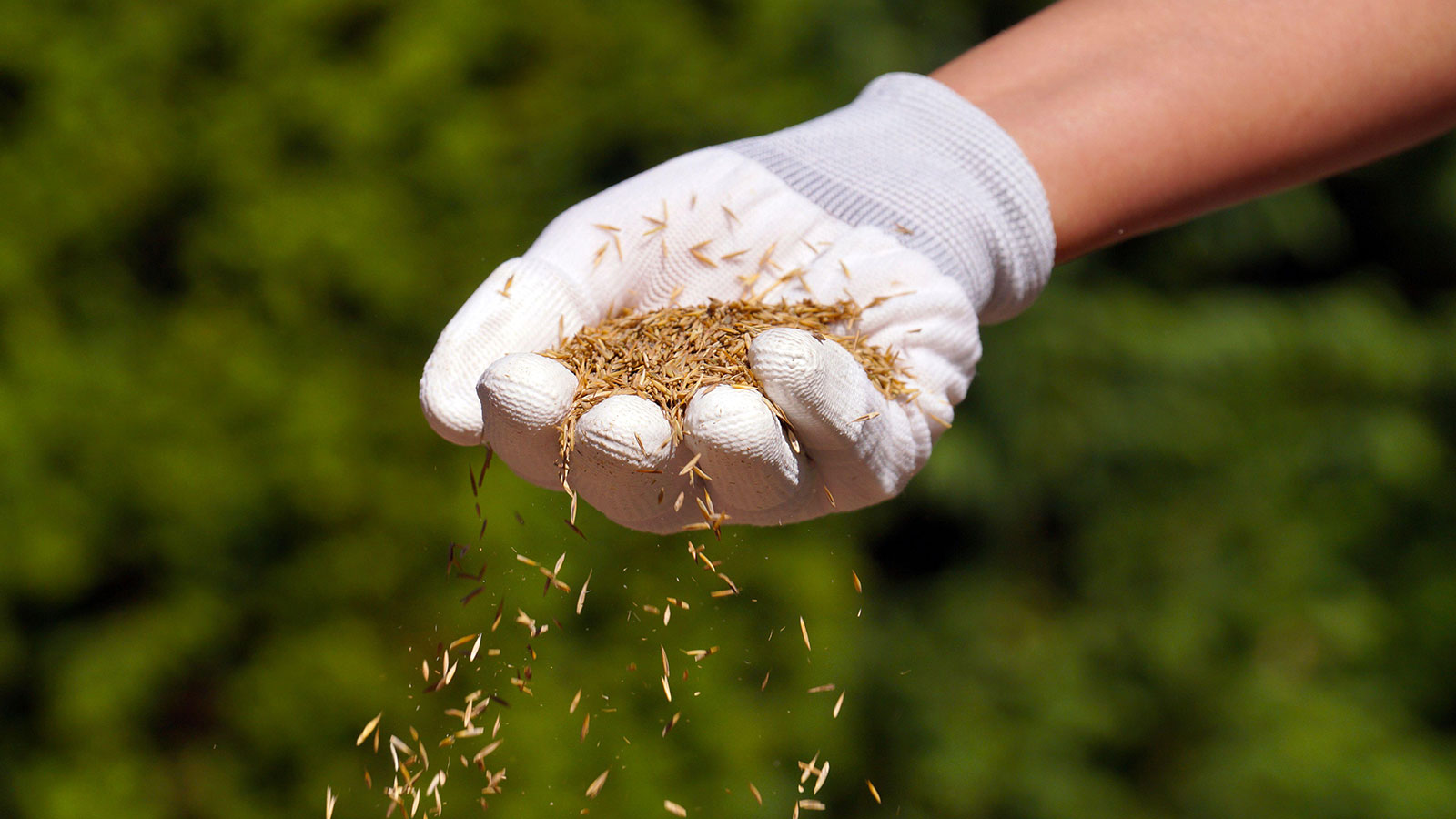
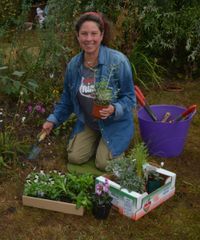
Overseeding a lawn in spring is one of the quickest and easiest ways to help it recover from any problems caused by winter weather, heavy foot traffic, or diseases.
Extreme cold and very wet conditions are equally damaging to grass in winter, especially if the lawn in your yard gets lots of foot traffic, whether it’s exercising pets, children playing games or people creating a well-worn path from the house to the garage. Even with the best possible lawn care, your grass may emerge from the cold, wet months with bare patches and dead grass.
I overseed my own lawn almost every spring to repair any damage caused by winter weather, and for years as a gardening editor, would share my tips to her readers on the best ways to do it. By following the correct method for overseeding a lawn, you can get it back to looking its best again in time for the warmer weather. Here, I take you through the process step-by-step.
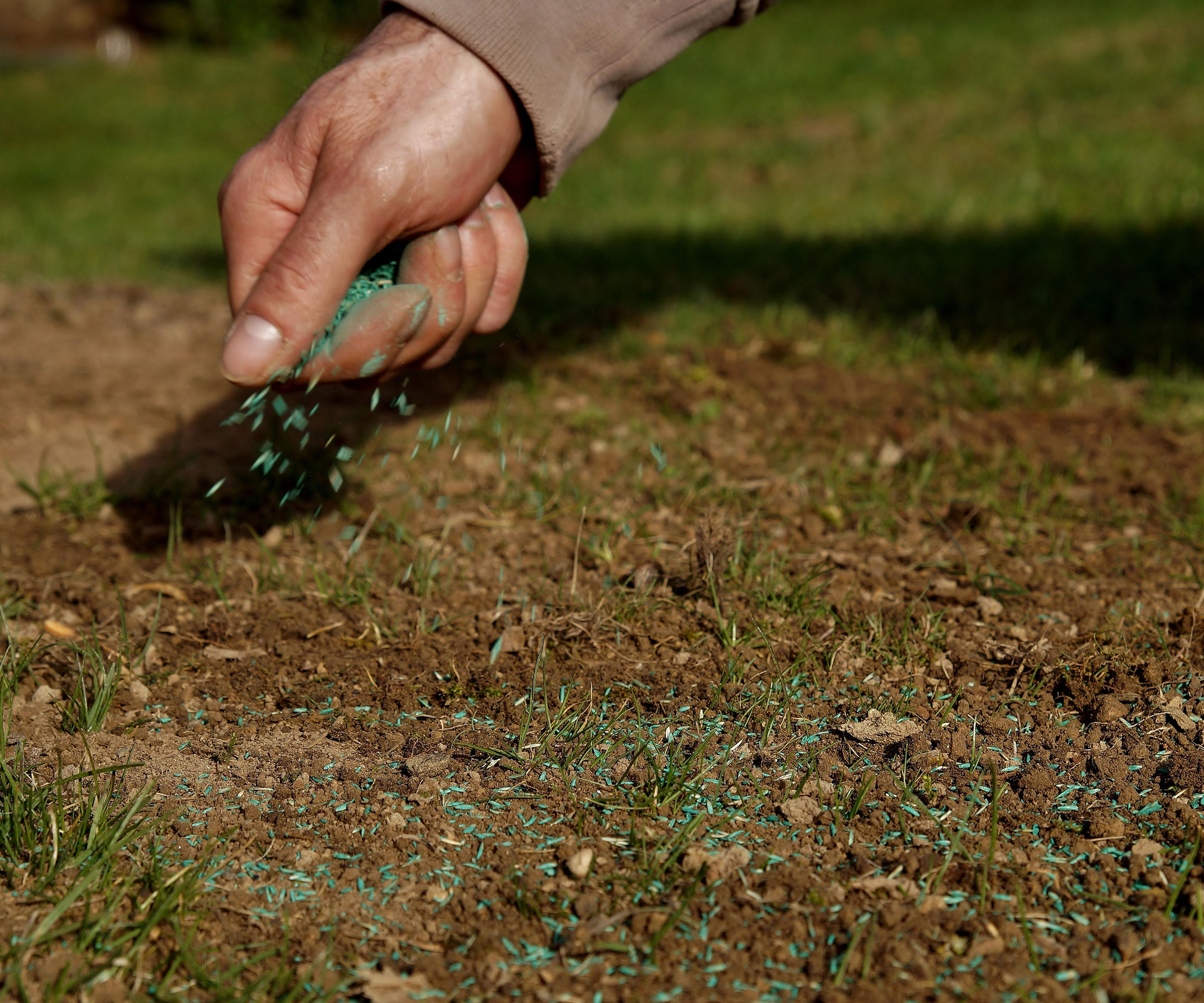
Overseeding a bare patch of lawn by hand
How to overseed a lawn in 6 simple steps
Overseeding is when we gently tease away the dead grass, weeds and moss from the lawn, remove the living moss and weeds, and then reseed the areas where the grass has become thin with new seed.
This will help improve the overall look of your lawn, and the strongly growing fresh grass will make it harder for weeds and moss to return.
Spring is a good time for overseeding a lawn or repairing patches in grass. Don’t overseed in summer, because the soil will be too hot and dry and you will waste a lot of time watering the seed after sowing, and it may struggle. There is no point in overseeding in winter either, when temperatures are too cold for growth and all that will happen is that hungry birds will steal your lawn seeds.
You will need:
Design expertise in your inbox – from inspiring decorating ideas and beautiful celebrity homes to practical gardening advice and shopping round-ups.
- A lawn mower
- A lawn rake, such as this great model from Amazon
- Scarifying machine (for large areas of lawn)
- A garden fork
- Moss killer, such as this Lilly Miller Moss Out from Amazon
- Lawn fertilizer
- Lawn seed
- Watering can, or hose with spray attachment, or a sprinkler system
Shop overseeding essentials
1. Mow your lawn
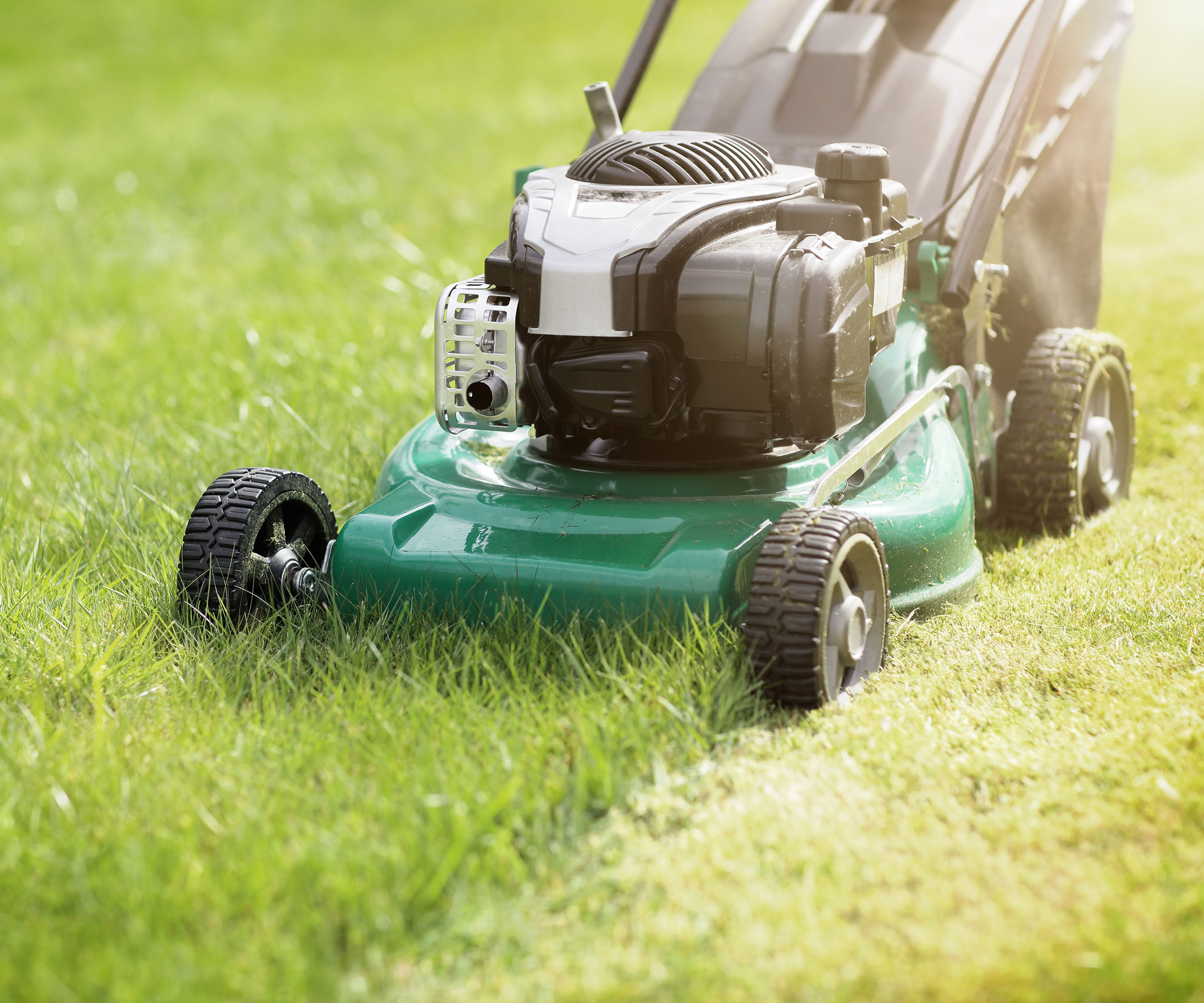
Cutting the grass is the first step in overseeding a lawn
The first step is to mow the grass, cutting it down to around 1 inches. This will make your lawn neater and also lets you see which areas are most in need of overseeding.
Make the cut on a dry day when there hasn’t been any rain, so the grass is less likely to clog your lawn mower blades. Never mow when the grass is frosted.
Ideally use a lawn mower with a grass collecting bag – this battery-powered Lawn Master lawn mower and strimmer combo from Amazon will also let you keep lawn edges neat – to minimize the raking you need to do.
2. Remove dead grass, weeds and moss
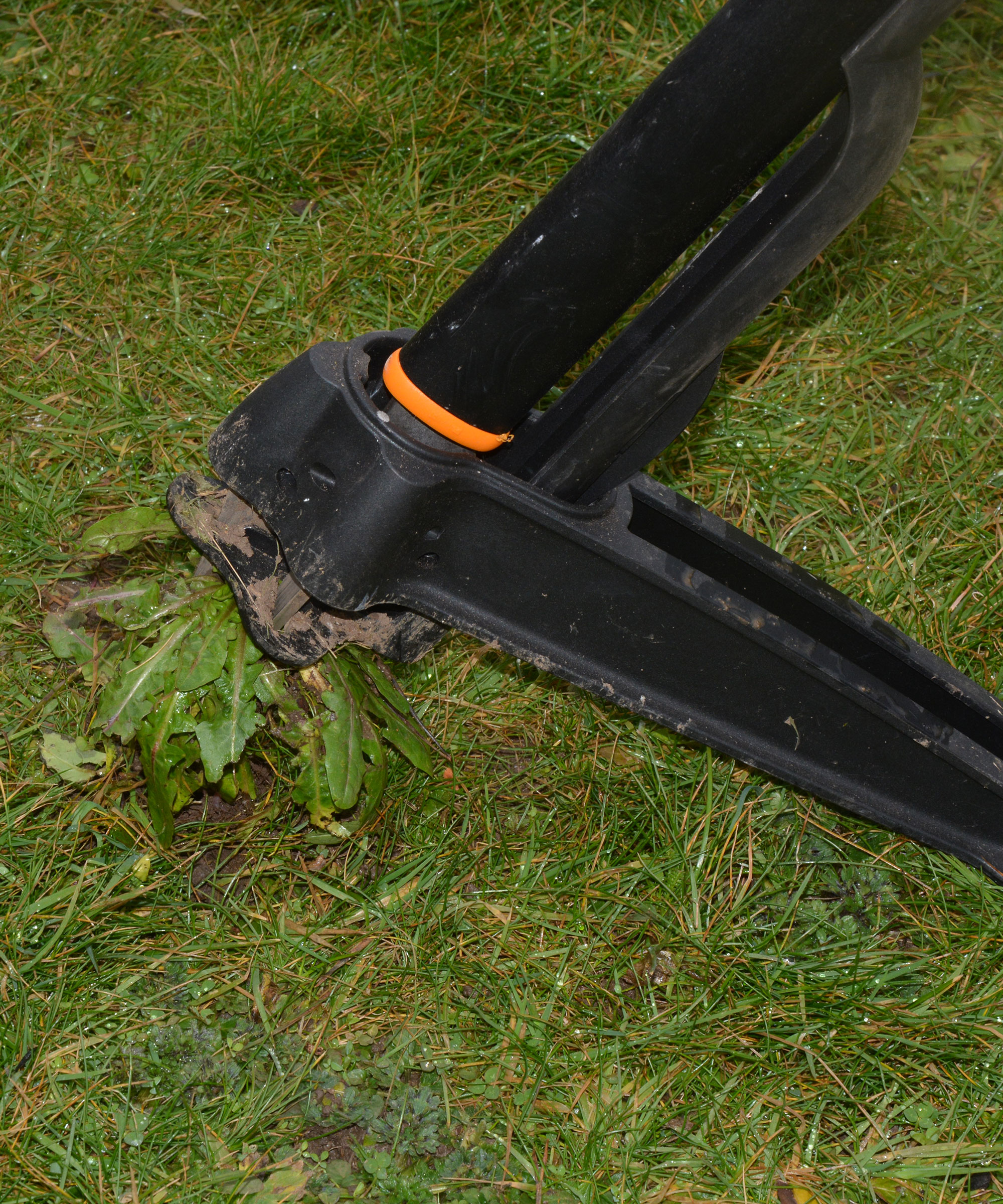
Weed pullers are an easy way of removing stubborn perennial lawn weeds with deep roots
The next step is to scarify the lawn to rake up and remove all the dead grass, moss and weeds.
I usually use a lawn rake, like this one from Amazon, to do this, but if you have a large expanse of lawn to tackle you may want to invest in a scarifying machine to do the job for you.
If there are lots of large perennial weeds growing among the grass, I would advise pulling them out with a weed puller. This will take the roots out completely. It may leave a bare patch of soil, but you can cover the area with grass seed and it will be hidden by new growth. This Fiskars weed puller from Amazon would be a suitable option.
3. Aerate the lawn
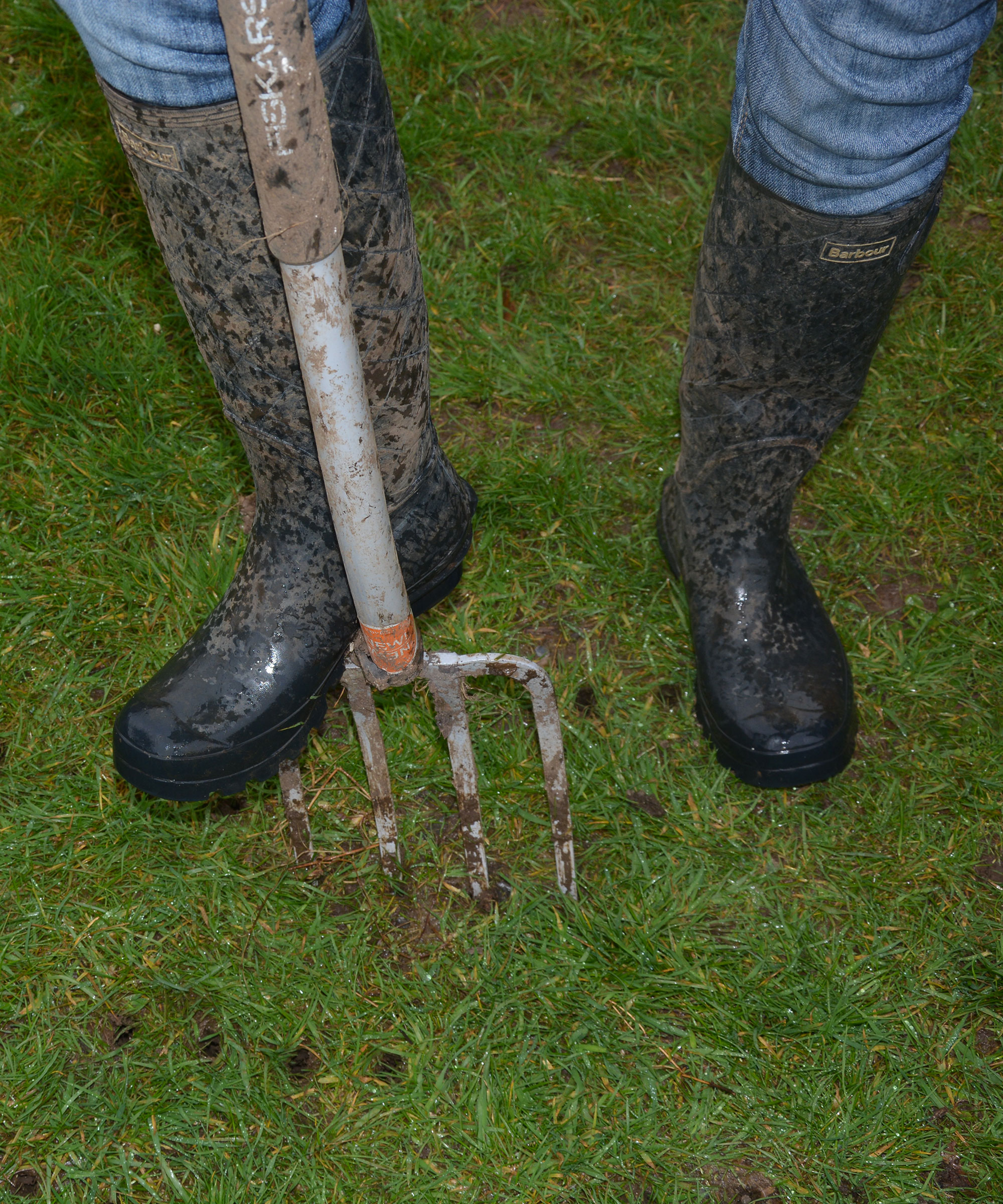
Using a garden fork is the easiest way to aerate a small patch of lawn
Now open up the soil by aerating the lawn, especially if it is compacted and has been waterlogged through winter, to improve drainage and ventilation around the roots of the grass.
The simplest way of doing this is to drive the spikes of a garden fork two inches into the soil, give it a wiggle and then move a little further up the area you are overseeding and repeat the process until the whole area is covered.
You can make this easier by buying something like this Go Plus aerating machine from Amazon – or even some spiked aerating boots. These Envy Green lawn aerator shoes from Amazon simply slip over the top of your own boots and strap into place.
4. Feed the lawn
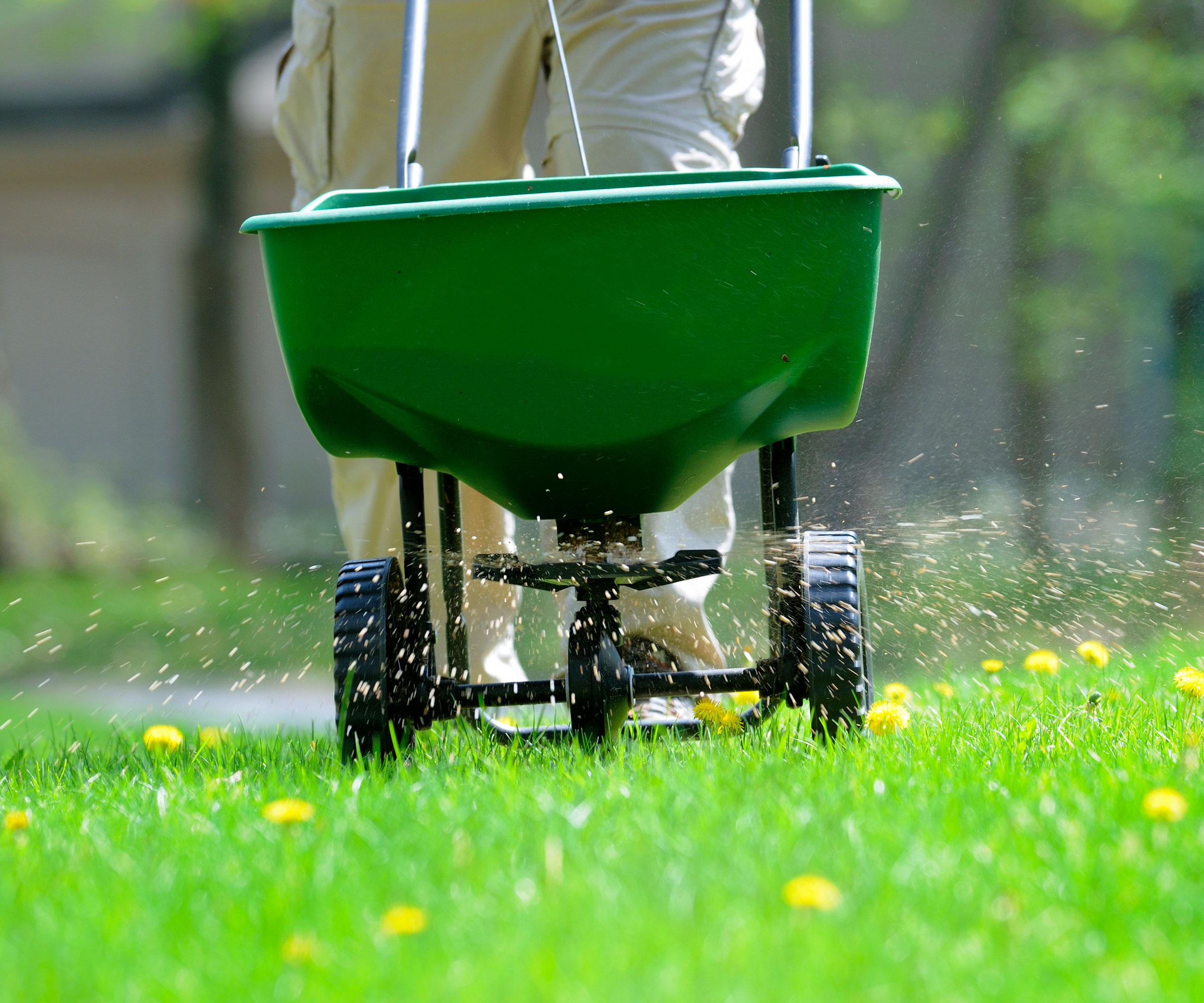
A machine that scatters fertilizer at the required amount may be the easiest way to fed a large patch of lawn
If you haven’t fed the lawn for several months, or since the fall, it is worth fertilizing the lawn now to give the existing grass a boost.
Choose a spring fertilizer that is rich in nitrogen to help the grass grow green and thick. Once applied and watered in, you should be able to continue with overseeding around four days later. This lawn feed from The Andersons at Amazon would be suitable.
However, if your lawn is full of moss and spreading weeds you could use a combined lawn feed and weed killer, such as this Greenview Weed & Feed with Crabgrass Preventer from Amazon. If you choose to go down this route you will need to wait around a month after application before overseeding (read the product packaging carefully) and may need to rake again to remove the dead plant materials before overseeding.
5. Sow your grass seed
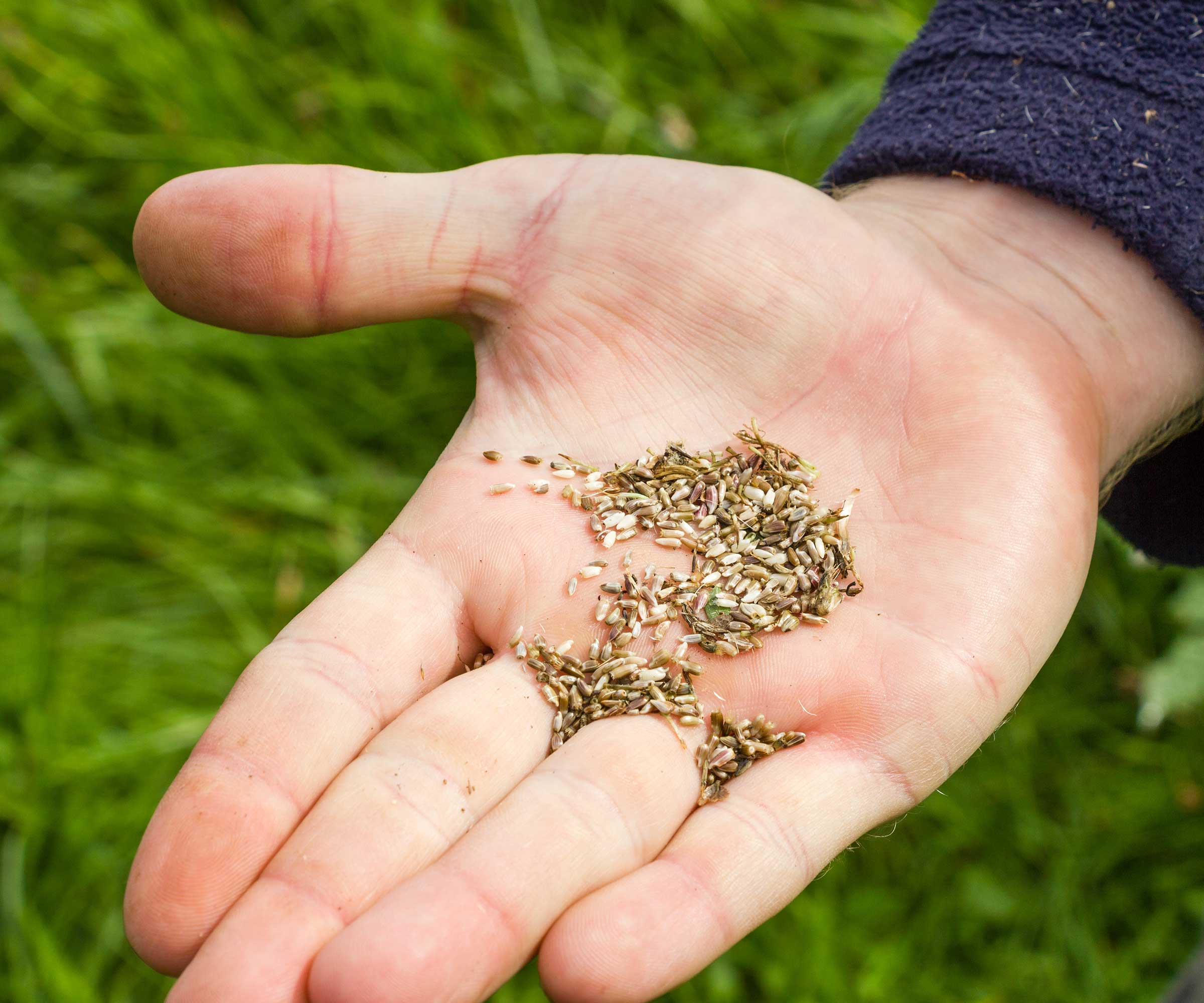
Scatter your chosen grass seed for overseeding at the amount recommended by the supplier – check the packet carefully. Spread it evenly, either by hand or using a seeding machine. These either come with wheels for larger areas, or as hand-help devices for smaller patches.
For the best results planting grass seed, mix the seed with some lawn topsoil for more even spreading and to give the soil and grass an additional boost.
Some people like a fine lawn that is kept neatly mown and pristine and isn’t used for anything too robust. In this instance you might choose a grass seed like this Kentucky Bluegrass Mix on Walmart.
If you have children or pets you will need something more robust, so I would choose a high-traffic mix like this Scotts Turf Builder from Amazon.
Not all grasses will grow in shady areas, so if you have lots of tall trees and shrubs overhanging your lawn, something like this Jonathan Green Dense Shade Grass Seed, from Amazon, would be suitable.
6. Water and protect the grass seed
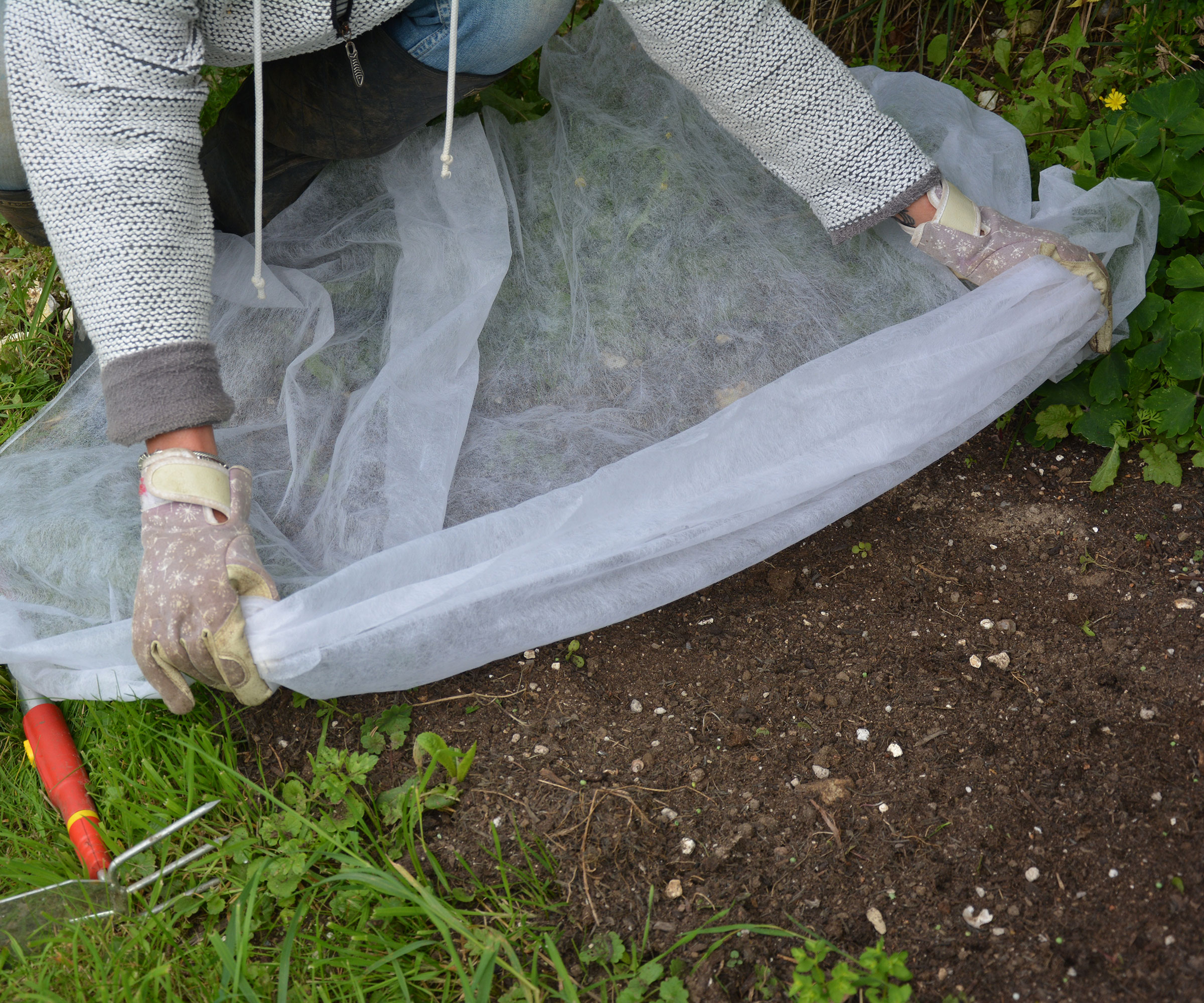
Use horticultural fleece or mesh netting to protect newly sown grass seed
Newly sown grass seed needs to be kept damp as it germinates and roots. Water immediately after sowing using a hose with a spray attachment, watering cans with a rose attached, or a sprinkler for larger areas. If rain is not forecast for the coming days, continue to water every 2-3 days.
There are several ways to protect freshly sown grass seed and help to speed up germination. Keeping the area damp and covering it over with hessian or fleece will create a microclimate under the cover that helps speed up germination and promote rapid establishment of the new grass. However, this type of covering needs to be pegged down firmly to prevent it flapping and bruising the young grass seedlings, which can kill them.
Grass seed is a tasty treat for birds, squirrels and groundhogs, so covering it with this horticultural fleece or fine mesh netting is also a good way to stop birds eating grass seed. Make sure the covering is securely anchored to the ground so that birds, animals and pets don’t get caught up in it.
Remove the protective covering once the grass seed has started growing strongly.
FAQs
Why is it necessary to overseed a lawn?
If it has been a wet winter, prolonged treading on wet grass growing in waterlogged soil can cause it to die back and create muddy patches that are easy for lawn weeds to colonise. By the time the spring rolls around, it isn’t surprising to find that your lawn is looking rather threadbare and has accumulated lots of weeds.
You will probably also need to get rid of lawn moss that has started to grow and there will be a fair few bare patches to fill. Overseeding is the best way to get it back to looking great again by the time the summer rolls around.
How soon can I walk on my lawn after overseeding?
One of the biggest lawn care mistakes you can make is walking on freshly sown grass. This will damage it, compact the soil and cause bare patches, so stay off it for between three to six weeks, longer if possible.
How soon can I mow my lawn after overseeding
When overseeding a lawn, it's best to wait until the seedlings have reached a height of 3-4 inches before making your first cut.
How often should I overseed a lawn?
It only needs doing twice a year at most, in the fall to repair damage caused by summer’s dry conditions and lots of use, and possibly again in spring if you didn’t do it before winter.
These are the best times because the soil will be warm and damp, perfect for grass seed germination.
Is overseeding the same as sowing a new lawn?
No; overseeding is a shorter and simpler job than sowing a lawn from scratch. You don’t need to prepare the ground first, and its aim is to improve an existing lawn, not start afresh.
Although it might seem like several steps to follow, making sure you learn how to overseed a lawn correctly is worth the time and effort, and is definitely something to add to your spring lawn care checklist. You need to create the best possible conditions as otherwise it's likely you'll soon spot that the grass seed isn't germinating properly.

Ruth is a Contributing Editor for Homes & Gardens, and formerly Gardening Editor of Amateur Gardening magazine. She is horticulturally trained, with a qualification from the Royal Horticultural Society. Her work for Amateur Gardening, the world's oldest weekly gardening publication, involved matching gardening tasks with each season, covering everything from sowing and planting, to pruning, taking cuttings, dealing with pests and diseases and keeping houseplants healthy. She is an expert in ornamental plants and edible crops, and everything she writes about and photographs is in her own garden, that has been a work in progress since her family moved there in 2012.
